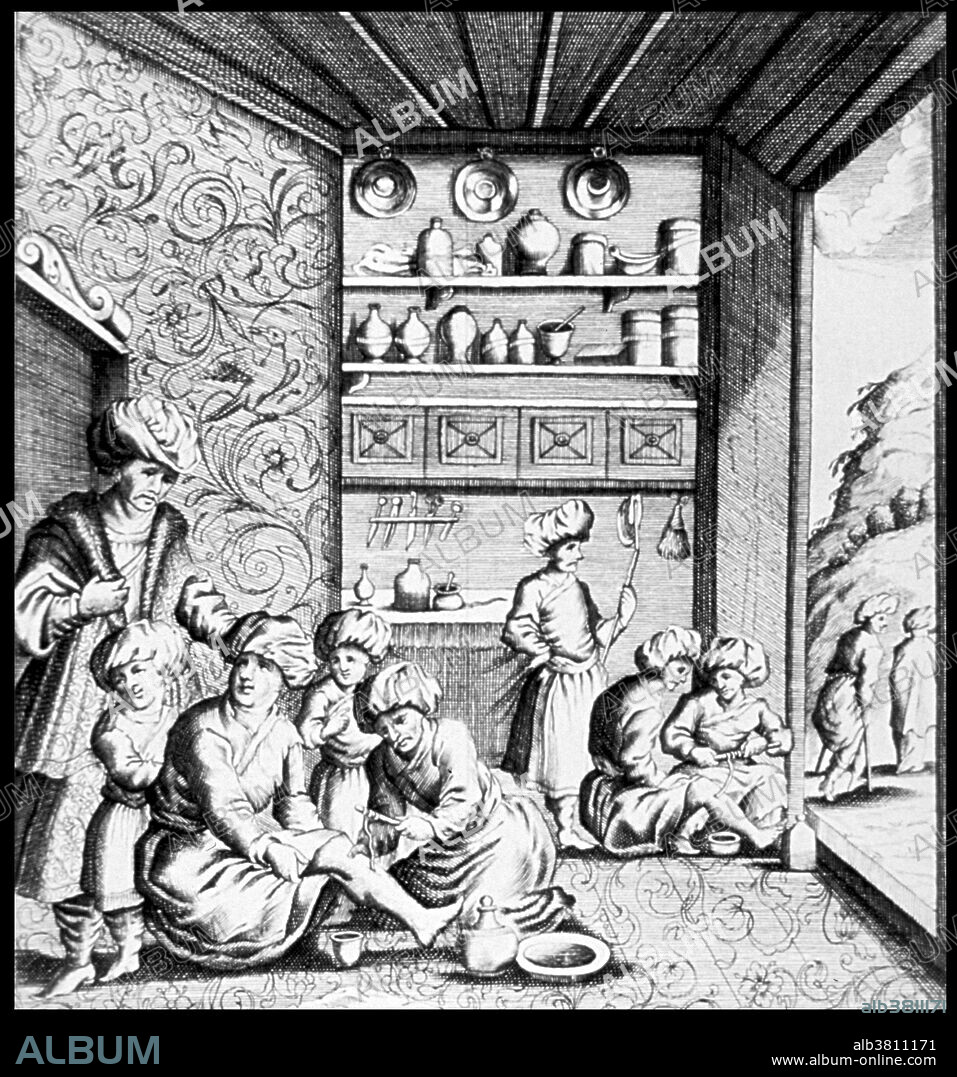alb3811171
Guinea Worm Extraction, 1674

|
Añadir a otro lightbox |
|
Añadir a otro lightbox |



¿Ya tienes cuenta? Iniciar sesión
¿No tienes cuenta? Regístrate
Compra esta imagen.
Selecciona el uso:

Título:
Guinea Worm Extraction, 1674
Descripción:
Traducción automática: A los pacientes se les eliminan los nematodos de las piernas. Dracunculus medinensis (gusano de Guinea) es un nematodo que causa la dracunculosis, también conocida como enfermedad del gusano de Guinea. La enfermedad es causada por la hembra que, con hasta 31 pulgadas de largo, se encuentra entre los nematodos más largos que infectan a los humanos. El método más común para eliminar el gusano consiste en sumergir la parte del cuerpo afectada en agua para sacarlo. Luego se limpia a fondo el sitio. Se aplica una ligera presión al gusano mientras se saca lentamente de la herida. La extracción completa de la hembra del gusano de Guinea suele tardar varios días. Después de cada día de extracción, la porción expuesta del gusano se envuelve alrededor de un trozo de gasa enrollada o un palito pequeño para mantener la tensión. Se especula que este método de envolver el gusano alrededor de un palo o gasa es la fuente de la Vara de Asclepio, el símbolo de la medicina. Grabado aparecido en "Exercitatio de vena medinensi, ad mentem Ebnsinae; sive, De dracunculis veterum", 1674
Patients are having nematodes removed from their legs. Dracunculus medinensis (Guinea worm) is a nematode that causes dracunculiasis, also known as guinea worm disease. The disease is caused by the female which, at up to 31 inches in length, is among the longest nematodes infecting humans. The most common method for removing the worm involves submerging the affected body part in water to coax the worm out. The site is then cleaned thoroughly. Slight pressure is applied to the worm as it is slowly pulled out of the wound. Full extraction of the female guinea worm usually takes several days. After each day's worth of extraction, the exposed portion of the worm is wrapped around a piece of rolled-up gauze or small stick to maintain tension. This method of wrapping the worm around a stick or gauze is speculated to be the source for the Rod of Asclepius, the symbol of medicine. Engraving appeared in "Exercitatio de vena medinensi, ad mentem Ebnsinae; sive, De dracunculis veterum", 1674.
Crédito:
Album / NLM/Science Source
Autorizaciones:
Tamaño imagen:
3643 x 3900 px | 40.6 MB
Tamaño impresión:
30.8 x 33.0 cm | 12.1 x 13.0 in (300 dpi)
Palabras clave:
ARABE • ARABES • ARTE • ASCÁRIDE • AUTOPSIA • BLANCO Y NEGRO • CIENCIA • DESTITUCION • DIBUJO • DISECCION • EXTRACCION • GRABADO • HISTORIA • HISTORICO • HOMBRE • ILUSTRACION • ISLÁMICO • MEDICINA • MEDICINAL • MUSULMAN • NEMÁTODOS • OBRA DE ARTE • RETRATO DE HOMBRE • SIGLO XVII
 Pinterest
Pinterest Twitter
Twitter Facebook
Facebook Copiar enlace
Copiar enlace Email
Email
